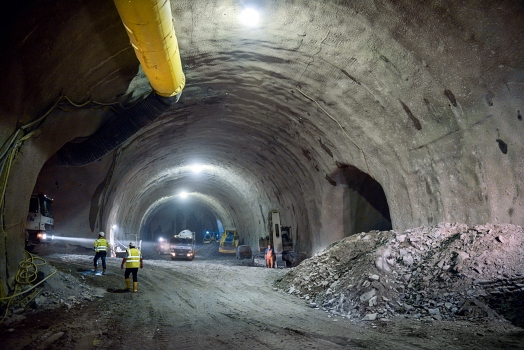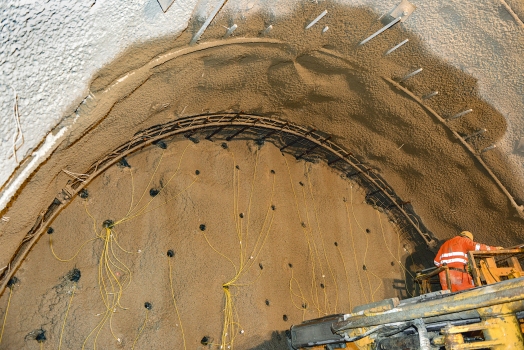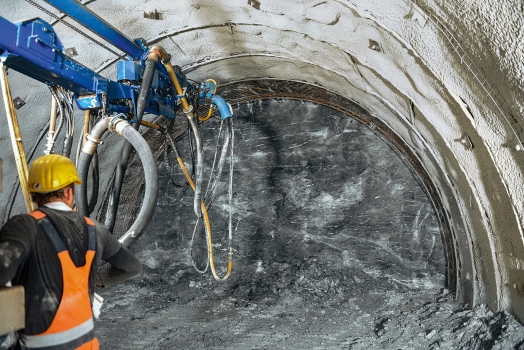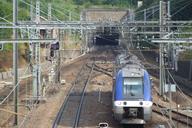Brenner Base Tunnel – Advancement in highly converging rock mass
At 1,371 m above sea level, the Brenner Pass is the most important connection between Central Europe and Italy, carrying more than a third of all transalpine traffic. The existing railway line from Innsbruck, Austria to Bolzano, Italy, was built in the 1860s. Due to grades of up to 25 ‰, freight trains often have to be pulled by two locomotives.
Media
The new Brenner Base Tunnel (BBT) runs from Innsbruck, Austria to Fortezza, Italy over a length of 55 km and will be the world's second largest tunnel after the Gotthard Base Tunnel in Switzerland. As a base tunnel, the railway tunnel passes unusually deep underneath the main ridge of the Alps. With a cover of 1,800 m, the tunnel will reach an elevation of 795 m at its highest point. Since the grade in the tunnel is limited to a maximum of 6.7 ‰, trains will be able to use the BBT at higher speeds in the future. The transit time from Innsbruck to Bolzano will be cut in half from currently more than two hours to below one hour once the tunnel is completed.
The BBT consists of two single track tunnel tubes with interior diameters of 8.1 m separated from each other at a distance of 70 m. Both tubes are connected via crosscuts every 333 m that will also serve as escape routes.
The STRABAG/Salini Impreglio Joint Venture has been awarded two contract sections of the BBT: The main contract section Tulfes-Pfons in Tyrol, Austria at the northern end of the project and the underground Eisack Crossing in the southern part of the tunnel in the province of Bolzano, Italy.
Main section includes 38 km of tunnel
The main section includes the construction of 38 km of tunnel. Due to the highly converging rock mass conditions, ground support products in this area have to be used on a large scale, which makes progress slow. Consequently, advancement in this area is simultaneously carried out from several places at once. The development includes the first sections of the tubes for the main tunnel as well as a 15 km long part of the Ahrental exploratory tunnel to Steinach, which is being excavated using a Tunnel Boring Machine (TBM).
Emergency tunnel will be 9 km long
A new emergency tunnel for the Innsbruck bypass and two connecting tubes between the bypass and the BBT are also being built. The 9 km long emergency tunnel is being built using the drill and blast method and runs parallel to the bypass. Within the scope of construction work, the exploratory tunnels that have already been built towards the south are being widened. DSI has already supplied ground support products for stabilizing advancement in the Innsbruck quartz phyllite.
Due to the high cover, the ground is highly converging in many areas. The portal area in Tulfes was stabilized using the AT–139 Pipe Umbrella System because of the soft ground that is prone to settlements. For this purpose, DSI supplied the complete pipe umbrella system including starter unit, threaded connections, drill bits and drill rods. This way, stability in the portal area was considerably enhanced which, in turn, increased safety in the advancement area. During advancement, 120 kN OMEGA-BOLT® Expandable Friction Bolts in lengths of 3 m with 150/150/8 mm anchor plates are installed for immediate support. The principal characteristics of OMEGA-BOLT® Anchors include their safe and easy installation and their insensitivity to blasting works because the load-bearing capacity is ensured over the entire installed anchor length.
Furthermore, 3, 4, 5 and 6 m long, Type SN20-180 and SN25-250 Anchors with different anchor plates are installed in accordance with construction progress. The anchors are installed in highly converging rock mass. Therefore, DSI produced and supplied the SN Anchors with special ALWAGRIP rib geometry in order to enhance their load-bearing capacity.
Additionally, DSI Austria also continuously supplied the self-drilling DYWI® Drill Hollow Bar System in lengths of 2, 3 and 4 m with accessories. The product range that was produced and supplied by DSI to the jobsite just in time also included 3 m long steel spiles, R32 self-drilling spiles in lengths of 3 and 4 m as well as 38 mm Ø steel tube spiles in lengths of 3 and 4 m.









